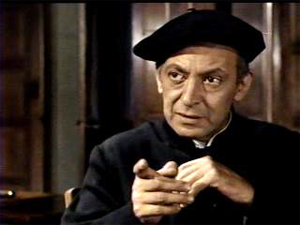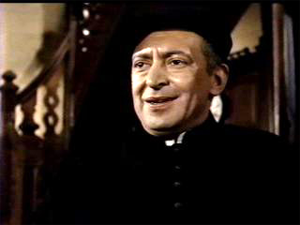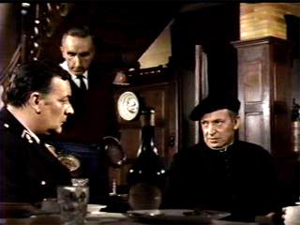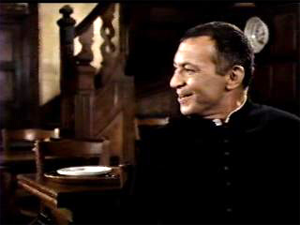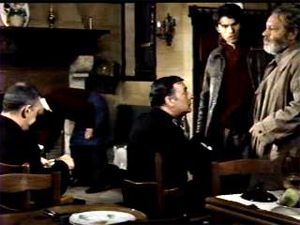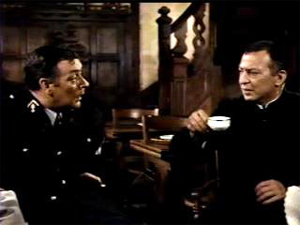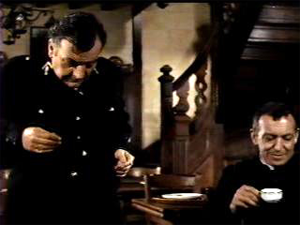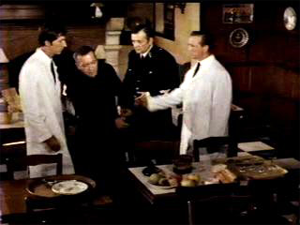Chapter One: Dharmapala as Theosophist
Who will be the agent between the world and the Masters?
-- Anagarika Dharmapala, at Madame Blavatsky’s death
Dharmapala was much more deeply influenced by Theosophy than scholarly accounts have allowed. Neglecting those Theosophical influences derives from the allure of a national subjectivity – specifically Buddhist and Sinhala – as a tool for interpreting postcolonial Sri Lanka. Such accounts reduce Theosophy to a vehicle for Buddhist reform or limit Theosophy’s influence on Dharmapala’s life to the period between 1891 and 1905, when he left Theosophy behind and became a Buddhist pure and simple. Often they mark the turn at the point when Blavatsky told him to fix his mind on learning Pali or when he fell out with Olcott. For many of the Sinhala Buddhists who joined the Theosophical Society after Olcott’s arrival, what recommended Theosophy was the society’s Western associations and willingness to help the Buddhist cause. For Dharmapala, Theosophy was quite a lot more. He learned how to embody the brahmacarya role by reading Sinnett’s Occult World.1 The mahatmas (advanced spiritual beings) gave him a compelling example of selfless service. Right up to the end of his diary keeping, he continued to invoke the mahatmas who watched over humanity from their Himalayan retreats. They provided him with examples that advanced spiritual states were possible, and they modeled the service to humankind that he pursued throughout his life.
Theosophy served as an instrument for his own high aspirations and idealism: the content remained largely Buddhist, but the notion that one could aspire to higher states of consciousness came from the mahatmas, who had themselves achieved those states. In contrast with the low spiritual aspirations of local monks, the mahatmas gave him a paradigm for his perfectionism. Theosophy gave him a rationale for carrying Buddhism to the West.2 Theosophy taught him that doing so was an act of the highest wisdom (parama vijnana). Summing up his life just before his death, he focused on people who had shaped his career; two were his parents and two Theosophists:
Sadhu! Sadhu!! Buddhists of Japan, China, Tibet, Siam, Cambodia, Ceylon & Burma are dead. The germ of Bodhi was impregnated in my heart by my father. The germ of renunciation was impregnated by my Mother, and the Devas induced Mrs. Mary Foster of Honolulu to help me. The path of perfection was shown to me by Mme. Blavatsky in my 21st year. (Diary, December 20, 1930).
Even someone as peripheral to his life as C.F. Powell played a part.3 When they worked together at Theosophical headquarters, Dharmapala found a real-world example of service to humanity and realized that he could do it himself.
Giving proper balance to Buddhism and Theosophy in Dharmapala’s life confronts challenges unlike comparable analytical tasks – sorting out, let’s say, the ways Gandhi was influenced by Christianity although never ceasing to think of himself as a Hindu.
GANDHI AND THE THEOSOPHICAL SOCIETY
Blavatsky's health eventually started to fail, forcing her to move to London. There she founded the Blavatsky Lodge and was visited by Mohandas K. Gandhi, who was receiving a Western education and studying to become a lawyer.
He was encouraged by Blavatsky and the Theosophists to read Hinduism’s religious text, the Bhagavad Gita, though he initially declined, embarrassed by a lack of knowledge of his native religion. He was also ashamed at his lack of comprehension of Sanskrit, but eventually said he was willing to read along with them.
This opened Gandhi’s perception of the religion, having previously cast it off as antiquated and a superstition that his parents shamefully still practiced. But reading the Gita changed his worldview, and it became his guide to life.
This was the first step in breaking down the “civilized” constructs that British imperialist culture had instilled in Gandhi, eventually leading to his non-violent, peaceful protests against that very system. He heard Blavatsky talking about a universal brotherhood and the commonality between all religion and races, inspiring one of the most famous political activists of all time.
It’s well documented that Gandhi attributed much of his inspiration to his time spent with the Theosophical society. He spoke of Blavatsky as being a major catalyst for his ideas, and while he was living in South Africa, Gandhi kept a picture of Annie Besant, Blavatsky’s successor, on his office wall.
Though he was intrigued by the Theosophical Society and its philosophies, he didn’t want to become a member, due to its esoteric, secretive nature. Gandhi believed that secret societies were anathema to democracy and would hinder its success. Besides, Gandhi was a man of the people, though he would eventually join as an associate member, a now defunct title.
GANDHI AND ANNIE BESANT
Annie Besant was an Irish activist who was involved in political and spiritual movements, which presented alternatives to capitalism and imperialism. She fought for women’s rights, freedom of thought, and secularism.
Besant was a compelling orator, and a speech she gave at Trafalgur Square in London was partially responsible for the Bloody Sunday of 1887, during which police clashed with protesters of the Irish National League and the Socialist Democratic Federation, arresting hundreds and injuring 75.
Eventually she joined the Theosophical Society after writing a review on one of Blavatsky’s books and subsequently interviewing her. She found socialism and economics lacked a spiritual aspect, and found Theosophy filled that void.
With her history in politics and newfound appreciation for Theosophy, she became involved in Indian politics, launching the foundation of the Indian Home Rule Movement in 1916. She became a member of the Indian National Congress and fronted the first political party in India whose goal was to overthrow the imperial British regime.
Obviously, she was met with some resistance and spent time in jail for a few months, but was eventually released and made president of the Indian National Congress for one year. The man who petitioned for her release from prison and who became her successor was none other than Mohandas Gandhi, when he returned home from his time spent in South Africa.
From then on, Gandhi would take over for Besant and develop his satyagraha movement to peacefully protest against British imperialism. And though they grew apart due to ideological differences, Besant continued to campaign for Indian independence.
Though the extent to which the occult Theosophical movement influenced Gandhi and Indian independence is not commonly known, it is well documented. It could also be said that the widespread influence of Eastern spirituality on Western culture that is so prominent today can be attributed largely to Blavatsky and Theosophy. Had she and her followers not taken the steps to influence Indian independence and the revivification of Hinduism, Indian history may have been different.
-- Gandhi Learned Hinduism from Blavatsky's Occult Theosophy , by Gaia Staff
What makes the present task complicated derives from the same virtues that made Theosophy successful as a social movement. Two of those virtues reinforce one another. Theosophy thought about itself as something other than a religion. It was rationalistic and scientific. Its self-description emphasized that the group was devoted to discussion and exploration. Joining the group did not entail abandoning the religion the new Theosophist had practiced previously. Membership in a Theosophical society was additive, and the society exercised authority that was softer than soft.
QUESTION No. 1. -- "What are the Pitris?" ...
Note. -- This question was -- with rare exceptions -- very badly answered. A large number of Esotericists simply replied, "I do not know," or, "I am not very clear," -- a confession of ignorance which no one, after a year of study, should have been obliged to make. An Esotericist has the duty of right-thinking as well as right-living, and a lamentable want of study is shown in most of the papers. It is wholly impossible to give more advanced teaching to those who are not even familiar with the broad outlines of the doctrines given to the world in the Secret Doctrine. Even the Notes on the Secret Doctrine, given monthly in Lucifer, would have enabled Esotericists to answer this question.
Q. (2) -- "What is Kama Rupa?" ...
NOTE. -- Many students answered this question by merely translating Kama-Rupa into "body of desire" -- an answer that could have been given by any outsider who had picked up a Theosophical publication dealing with the seven principles. Only a very small minority stated that the Rupa was formed after death -- a fact which seems to imply, that great majority of Esotericists have not taken the trouble to read the third Instructions. Such gross ignorance as the the confounding of Kama-Rupa with Kama-Loca is also shown in some of the answers. The mistake in some cases was probably due to the acceptation by the students of Mr. Sinnett's classification, without any analysis. Kama-Rupa must be included in the classification, because potentially it exists, although it is not concentrated or collected into a definite form until death breaks up the body. This may be understood in the same way as when we say that in such-and-such a man's body there are so many ounces of carbon, which, however, we know will not reveal themselves as carbon until released from the other elements.
Q. (3) -- "What is the difference between the Higher and the Lower Self?" ...
Note. -- Scarcely any avoided a confusion between the Higher Self and the Higher Ego. Some fell into the most hopeless blunders, showing that they had no clear ideas of the septenary constitution of man. Serious mistakes were also made as to the meaning of the "Lower Self;" one wild guess identifying it with the Auric Egg. Yet every Esotericist has invoked the Higher Self, and ought surely to have taken the trouble to make clear to himself what it was he invoked.
Q. (4) -- "What is the Astral Light?" ...
Note. -- That the Astral Light contains the record of earth was generally stated, although one student informed his surprised teacher that the Astral Light was the divine spark within us. This particular student is required to study more and think more. Few, however, understood the relation of the Astral Light to the earth as its Linga Sarira.
Q. (5) -- "Give reasons for joining the E.S."
Note. -- This question was, on the whole, very well answered, the replies showing earnestness and sincerity.
Q. (6) -- "What Theosophical book do you consider has most helped you?"
Note. -- If the books named are carefully studied, knowledge will be rapidly acquired.
Q. (7) -- "What is Occultism; and what do you consider to be Practical Occultism?" ...
Note. -- Badly answered. Hardly anyone had caught the central idea of Occultism.
-- The Esoteric Papers of Madame Blavatsky, by H. P. Blavatsky
The group that Olcott established in Colombo got the name Buddhist Theosophical Society. The specifically Theosophical content was negligible, but the group retained the name long after Olcott died and any need remained for reliance on Theosophy.
Leela Gandhi characterizes Theosophy as an “affective community” in which people of one sort mixed freely with others in the spirit of equality and solidarity. In her account imperialism did not itself foster human solidarity, but the imperial condition – in places as diverse as London and Calcutta – gave rise to cosmopolitanism, which had an elective affinity for intercultural friendship.
Elective Affinity: A term used by Max Weber to describe the relationship between Protestantism and capitalism (in The Protestant Ethic and the Spirit of Capitalism, 1905). It refers to the resonance or coherence between aspects of the teachings of Protestantism and of the capitalist enterprise, notably the ethos of the latter. The relationship was unconscious so far as the actors involved were concerned. The concept has remained firmly tied to Weber's work although it has been used loosely by other sociologists, often in situations where it seems likely that there is an association between certain variables, but it is not yet clear what form this connection might take. A more modern way of describing the situation to which the concept applies might be in terms of the connections between beliefs, actions, and the unintended consequences of action. (see R. H. Howe , ‘Max Weber's Elective Affinities’, American Journal of Sociology, 1978.) See also PROTESTANT ETHIC THESIS; UNINTENDED CONSEQUENCES.
-- Elective Affinity, by Encyclopedia.com
That cosmopolitanism produced “affective communities,” each marked by belonging without uniformity. Those communities provided an alternative to self-identical communities where an actor encounters others in “relation to himself, perpetually repeated.”4 The emphasis on equality and solidarity duly noted, the situation among Theosophists was more complicated. The movement produced its own variety of self-identical communities. In Burma there were three Theosophical societies – a Buddhist one for Burmese, a Hindu one for Indians, and one made up of Europeans and “half-castes,” specifically occupying themselves with the study of mesmerism.5 Members of the Philadelphia Theosophical Society requested permission to form a branch to admit only Germans to membership, leading to the establishment of Die Deutsche Theosophische Gesellschaft [German Theosophical Society].6 Whether bringing members of different sorts into one circle of inquiry or providing separate Theosophical venues for self-identical groups of people, Theosophy offered its members the invidious pleasures of investigating traditional religious truths at a depth that ordinary Hindus, Buddhists, and Christians did not know.
A second virtue was more semiotic than organizational. Blavatsky began by appropriating ancient Egyptian categories and practices, but she hit her stride after turning her attention to South Asia, a turn that was initiated by the putative trip she made to Tibet to learn the “ancient wisdom” from a group of adepts who lived in ashrams scattered across the Himalayas. These mahatmas made up what Blavatsky called a Great White Brotherhood, and their wisdom could be found in diminished form in all religions. At full strength, that wisdom was delivered in letters that Blavatsky and others received from the mahatmas. The language was English or French, the concepts were Hindu or Buddhist.
[Rudolf] Steiner claimed that [Franz] Hartmann had once told a story of how William Quan Judge had complained to him that he never received any letters from the mysterious Himalayan masters. Judge refused Hartmann's suggestion that he write some to himself with the stricture that he must be able to say that his letters arrived out of the blue in the known fashion of Mahatma letters. Hartmann's solution was simple: he volunteered to climb on a chair and drop the letters on Judge's head.
-- The Occult Establishment, by James Webb
Shifting between registers gave Theosophical talk a kind of transidiomaticity that it shared with South Asian figures such as Vivekananda, Aurobindo, and Mahatma Gandhi. Transidiomatic South Asian talk spread to people as diverse as Rudyard Kipling, James Joyce, and Robert J. Oppenheimer.7
Transidiomatic Practices
One of the most significant breathroughs in language studies in the late twentieth century was the introduction of the notion of communicative practice. Under the influence of European political philosophers such as Foucault and Bourdieu, language and communication scholars adopted the notion of practice to deal not only with communicative codes and ways of speaking (some of the rallying concepts of the first wave of the ethnography of communication), but also with semiotic understanding, power asymmetry and linguistic ideology. By focusing on the “socially defined relation between agents and the field that ‘produces’ speech forms” (Hanks 1996:230), a practice-oriented approach can then explore speakers’ orientations, their habitual patterns and schematic understandings and their indexical strategies. Hanks defined communicative practice as constituted by the triangulation of linguistic activity, the related semiotic code or linguisitic forms and the ideology of social indexicality. He invoked a poetic image of practice as “the point of conversion of the quick of activity, the reflexive gaze of value, and the law of the system” (1996:11).
This triangulation of linguistic activity, semiotic codes and indexicality needs to be complexified to account for how groups of people that are no longer territorially defined, think about themselves, communicate using an array of both face-to-face and long-distance media, and in so doing produce and reproduce social hierarchies and power asymmetries. I propose to use the term transidiomatic practice to describe the communicative practices of transnational groups that interact using different languages and communicative codes simultaneously present in a range of communicative channels, both local and distant.
Transidiomatic practices are the result of the co-presence of digital media and multi-lingual talk exercised by deterritorialized/reterritorialized speakers. They operate in contexts heavily structured by social indexicalities and semiotic codes that produced relatively stable power asymmetries and cultural hegemonies. Anyone present in transnational environments, whose talk is produced by both biological and digital means, and who interacts with both present and distant people is engaged in transidiomatic practices.
-- Theories and Methods, edited by Peter Auer, Jurgen Erich Schmidt
As this discourse traveled from its first occupational niche, it mutated, and its rhetorical force was transformed. When J. Robert Oppenheimer said the first nuclear explosion reminded him of a passage from the Bhagavad Gita – “Now I am become Death, the destroyer of worlds” – he put the Hindu text to new purposes, acquiring new meanings and losing old ones. What was originally a discourse framed in a particular register could speak to new audiences without having to “posit the particular medium of communication as a coherent foundation,” bypassing the necessity for a “more conscious or full-fledged translation.” In this context, Theosophical discourse profited from an advantage it did not earn – it borrowed the authority of older ones without continually having to provide context and explication, and that authority enabled it to become “a material phenomenon with corresponding effects within social networks of power.”8
Argument by Gibberish (Bafflement):
this is the extreme version of Argument By Prestigious Jargon. An invented vocabulary helps the effect, and some net.kooks use lots of CAPitaLIZation. However, perfectly ordinary words can be used to baffle. For example, "Omniscience is greater than omnipotence, and the difference is two. Omnipotence plus two equals omniscience. META = 2." [From R. Buckminster Fuller's No More Secondhand God.]
Gibberish may come from people who can't find meaning in technical jargon, so they think they should copy style instead of meaning. It can also be a "snow job", AKA "baffle them with BS", by someone actually familiar with the jargon. Or it could be Argument By Poetic Language.
An example of poetic gibberish: "Each autonomous individual emerges holographically within egoless ontological consciousness as a non-dimensional geometric point within the transcendental thought-wave matrix."
-- A List Of Fallacious Arguments, by Don Lindsay
Blavatsky was no South Asian, but she oustripped her Indian peers by the volume and audacity of her appropriations, taking Sanskrit expressions and fitting them to her own purposes. Her teachings took their rhetorical force from head-to-head exchanges she had with the Tibetan adepts she had met in the Himalayas, although the first conversation came when an exceptionally tall Indian prince – whom she immediately recognized as her “Protector” – approached her in Hyde Park and told her that she had great work to do for humankind. If she accepted, he told her, she would have to spend years in Tibet learning the knowledge to be transmitted.9 The knowledge that ended up in Isis Unveiled derived from some one hundred books on the occult and cited some fourteen hundred works in various languages.10 To her followers, what the mahatmas told her was explicated by scholarly citations; to the cynical, what the mahatmas told her came directly from those sources.
During the past three years I have made a more or less exhaustive analysis of the contents of the writings of Madame H. P. Blavatsky; and I have traced the sources whence she derived - and mostly without credit being given - nearly the whole of their subject-matter. The presentation, in detail, of the evidences of this derivation would constitute a volume; but the limitations of this paper will admit only of a brief summary of the results attained by my analysis of these writings. The detailed proofs and evidence of every assertion herein are now partly in print and partly in manuscript; and they will be embodied in full in a work I am preparing for publication, - an expose of theosophy as a whole. So far as pertains to Isis Unveiled, Madame Blavatsky’s first work, the proofs of its wholesale plagiarisms have been in print two years, and no attempt has been made to deny or discredit any of the data therein contained. In that portion of my work which is already in print, as well as that as yet in manuscript, many parallel passages are given from the two sets of writings, - the works of Madame Blavatsky, and the books whence she copied the plagiarised passages; they also contain complete lists of the passages plagiarised, giving in each case the page of Madame Blavatsky’s work in which the passage is found, and the page and name of the book whence she copied it. Any one can, therefore, easily test the accuracy of my statements.
In Isis Unveiled, published in 1877, I discovered some 2000 passages copied from other books without proper credit. By careful analysis I found that in compiling Isis about 100 books were used. About 1400 books are quoted from and referred to in this work; but, from the 100 books which its author possessed, she copied everything in Isis taken from and relating to the other 1300. There are in Isis about 2100 quotations from and references to books that were copied, at second-hand, from books other than the originals; and of this number only about 140 are credited to the books from which Madame Blavatsky copied them at second-hand. The others are quoted in such a manner as to lead the reader to think that Madame Blavatsky had read and utilised the original works, and had quoted from them at first-hand, - the truth being that these originals had evidently never been read by Madame Blavatsky. By this means many readers of Isis, and subsequently those of her Secret Doctrine and Theosophical Glossary, have been misled into thinking Madame Blavatsky an enormous reader, possessed of vast erudition; while the fact is her reading was very limited, and her ignorance was profound in all branches of knowledge.
The books utilised in compiling Isis were nearly all current nineteenth-century literature. Only one of the old and rare books named and quoted from was in Madame Blavatsky’s possession, - Henry More’s Immortality of the Soul, published in the seventeenth century. One or two others dated from the early part of the present century; and all the rest pertained to the middle and later part of this century. Our author made great pretensions to Cabbalistic learning; but every quotation from and every allusion to the Cabbala, in Isis and all her later works, were copied at second-hand from certain books containing scattered quotations from Cabbalistic writings; among them being Mackenzie’s Masonic Cyclopaedia, King’s Gnostics, and the works of S. F. Dunlap, L. Jacolliot, and Eliphas Levi. Not a line of the quotations in Isis, from the old-time mystics, Paracelsus, Van Helmont, Cardan, Robert Fludd, Philalethes, Gaffarel, and others, was taken from the original works; the whole of them were copied from other books containing scattered quotations from those writers. The same thing obtains with her quotations from Josephus, Philo, and the Church Fathers, as Justin Martyr, Origen, Clement, Irenaeus, Tertullian, Eusebius, and all the rest. The same holds good with the classical authors, - Homer, Ovid, Horace, Virgil, Plato, Pliny, and many others. The quotations from all these were copied at second-hand from some of the 100 books which were used by the compiler of Isis.
In a number of instances Madame Blavatsky, in Isis claimed to possess or to have read certain books quoted from, which it is evident she neither possessed nor had read. In Isis, i., 369-377, are a number of quotations from a work of Figuier’s, that she claimed to have taken from the original work, which she says (i., 369) now "lies before us". As every word from Figuier in Isis was copied from Des Mousseaux’s Magie au Dix-neuvieme Siecle, pp. 451-457, the word "lies" in the sentence used by her is quite a propos. In Isis, i., 353, 354, et seq., she professed to quote from a work in her possession, whereas all that she quoted was copied from Demonologia, pp. 224-259. In ii., 8, she claimed that she had read a work by Bellarmin, whereas all that she says about him, and all that she quotes from him, are copied from Demonologia, pp. 294, 295. In ii., 71, she stated that she had a treatise by De Nogen, but all that she knows about him or his treatise was taken from Demonologia, p. 431. In ii., 74, 75, the reader is led to believe that certain quotations from The Golden Legend were copied by her from the original; the truth being that they were taken from Demonologia, 420-427. In ii., 59, she gave a description of a standard of the Inquisition, derived, she said, from "a photograph in our possession, from an original procured at the Escurial of Madrid"; but this description was copied from Demonologia, p. 300.
In Isis, i., pp. xii, to xxii., is an account of the philosophy of Plato and his successors. Nearly the whole of these ten pages was copied from two books, - Cocker’s Christianity and Greek Philosophy, and Zeller’s Plato and the Old Academy. There are some 25 passages from Cocker and 35 from Zeller; and, of all these, credit is given for but one citation from Cocker and about a dozen lines from Zeller. In Isis, ii., 344, 345, 9 passages are copied from Zeller, but one of which is credited.
Here follows a list of some other of the more extensive plagiarisms in Isis. It includes the names of the books plagiarised from, and the number of passages in them that were plagiarised:
-- The Sources of Madame Blavatsky's Writings, by William Emmette Coleman
In this context Hindu and Buddhist religious terms had already entered a transidiomatic environment before Blavatsky appropriated them – the index to Isis Unveiled runs from akasa and arhat to yama an dyuga, but there are hundreds of terms in between. That vocabulary in hand, she managed to create a world of intimacy, brotherhood, spiritual growth, and humanitarian purpose, and that world naturally meshed with Western knowledge of South Asian religion that was de facto authoritative. Texts were everywhere – not Sanskrit or Pali but English and German – and the messages themselves appeared in either book or letter form, their allure coming from their having been communicated to Blavatsky directly. She alone had actually encountered a mahatma, and she controlled access to them.
Gombrich and Obeyesekere find theoretical leverage in a notion that parallels Srinivas Aravamudan’s “transidiomaticity.” When Sinhalas today say that Buddhism is not itself a “religion,” they “overcode” other religions. By claiming that Buddhism is a philosophy and not a religion, they gain a familiar advantage: “If Buddhism is not a religion like Christianity, Hinduism or Islam, that leaves open the possibility that it moves on a higher plane of generality, a more exalted plane.”11 Buddhists gain another advantage in the bargain, subsuming mere religions under their wing. Gombrich and Obeyesekere write that Buddhism may have learned this trick from Theosophy. The present chapter confirms their speculation by tracing the Buddhist “not a religion” argument to Theosophy. There are other discourses and practices that modern Buddhism owes to Theosophy. The additive nature and transidiomatic diction of Theosophy allowed Dharmapala to move casually between subject positions that could be Buddhist, Theosophist, or both.12 To the extent that Dharmapala was a Buddhist universalist, he was so because he was first a Theosophical universalist.
In Japan, Bodh Gaya, Calcutta, and the West, Dharmapala negotiated forces well beyond his control and encountered people who spoke different languages and entertained different objectives even as they cooperated with him. He made his own decision about renouncing the world, invented a role for himself, and made, broke, and remade a relationship with the Theosophical Society on his own terms. All of these turns engaged issues of identity and difference, universalism and particularism by way of Dharmapala’s own self-understanding, and after the fact, he could see just how fateful was the decision to push his Buddhist identity to the fore:
Had I remained in the T.S. [Theosophical Society] I don’t know what I would have been today. I would have studied Theosophical literature and become half Vedantin, half Buddhist, or become a chela and [line buried in crease o page]… and work in the Theosophical Society carrying out the wishes of the Theosophical leaders, or become the general Secretary of the Buddhist Section. I would have had a larger field to work with friends all over the Theosophical world. But my impulse and wisdom carried me towards the Path of Samma sambodhi. (Sarnath Notebook no. 53)
The problem here is that after his turn back to Buddhism, he continued to speak regularly in a Theosophical idiom and hold to a set of Theosophical practices. Phrases such as “samma sambodhi” resonate with both Buddhism and Theosophy.13
Scholars have found Theosophical influence in a variety of modernist contexts, from W.B. Yeats to linguistic theory, from James Joyce to abstract art.14 Gauri Visvanathan argues that Annie Besant’s conversion to Theosophy from socialism and atheism “prepares the ground for the emergence of the relational model of the commonwealth,” replacing rule by force with the idea that the empire realized the Theosophical notion of universal brotherhood.15
In his "Confession of Faith" Rhodes outlined the types of persons who might be useful members of this secret society. As listed by the American Secretary to the Rhodes Trust, this list exactly describes the group formed by Milner in South Africa:…."Men of ability and enthusiasm who find no suitable way to serve their country under the current political system; able youth recruited from the schools and universities; men of wealth with no aim in life; younger sons with high thoughts and great aspirations but without opportunity; rich men whose careers are blighted by some great disappointment. All must be men of ability and character.... Rhodes envisages a group of the ablest and the best, bound together by common unselfish ideals of service to what seems to him the greatest cause in the world. There is no mention of material rewards. This is to be a kind of religious brotherhood like the Jesuits, 'a church for the extension of the British Empire.'"
When the war broke out in 1914, the reports were not finished, so it was decided to print the four sections already sent out, with a concluding chapter. A thousand copies of this, with the title Project of a Commonwealth, were distributed among the groups. Then a popular volume on the subject, with the title The Problem of the Commonwealth and Curtis's name as editor, was published (May 1916). Two months later, the earlier work (Project) was published under the title The Commonwealth of Nations, again with Curtis named as editor. Thus appeared for the first time in public the name which the British Empire was to assume thirty-two years later. In the September 1916 issue of The Round Table, Kerr published a statement on the relationship of the two published volumes to the Round Table Groups. Because of the paper shortage in England, Curtis in 1916 went to Canada and Australia to arrange for the separate publication of The Problem of the Commonwealth in those countries. At the same time he set up new Round Table Groups in Australia and New Zealand. Then he went to India to begin serious work on Indian reform. From this emerged the Government of India Act of 1919, as we shall see later.
By this time Curtis and the others had come to realize that any formal federation of the Empire was impossible. As Curtis wrote in 1917 (in his Letter to the People of India): "The people of the Dominions rightly aspire to control their own foreign affairs and yet retain their status as British citizens. On the other hand, they detest the idea of paying taxes to any Imperial Parliament, even to one upon which their own representatives sit. The inquiry convinced me that, unless they sent members and paid taxes to an Imperial Parliament, they could not control their foreign affairs and also remain British subjects. But I do not think that doctrine is more distasteful to them than the idea of having anything to do with the Government of India."
Reluctantly Curtis and the others postponed the idea of a federated Empire and fell back on the idea of trying to hold the Empire together by the intangible bonds of common culture and common outlook. This had originally (in Rhodes and Milner) been a supplement to the project of a federation. It now became the chief issue, and the idea of federation fell into a secondary place. At the same time, the idea of federation was swallowed up in a larger scheme for organizing the whole world within a [url=x]League of Nations[/url]. This idea had also been held by Rhodes and Milner, but in quite a different form. To the older men, the world was to be united around the British Empire as a nucleus. To Curtis, the Empire was to be absorbed into a world organization. This second idea was fundamentally mystical. Curtis believed: "Die and ye shall be born again." He sincerely felt that if the British Empire died in the proper way (by spreading liberty, brotherhood, and justice), it would be born again in a higher level of existence — as a world community, or, as he called it, a "Commonwealth of Nations."
-- The Anglo-American Establishment: From Rhodes to Cliveden, by Carroll Quigley
Laurie Sears finds more unlikely effects. In her account Javanese shadow puppetry was less a long-standing indigenous tradition than a tradition remade under Theosophical inspiration. Wayang under Theosophical interpretation had other applications. It became a way of imagining a nation that transcended Java and incorporated the rest of Indonesia.16
Wayang, also known as wajang, is a traditional form of puppet-shadow play originally found in the cultures of Java, Indonesia. form of puppet theatre art found in Indonesia and other parts of Southeast Asia, wherein a dramatic story is told through shadows thrown by puppets and sometimes combined with human characters. The art form celebrates Indonesian culture and artistic talent; its origins are traced to the spread of Hinduism in the medieval era and the arrival of leather-based puppet arts called thalubomalata from southern India.
-- Wayang, by Wikipedia
Joy Dixon has shown how Theosophy informed fin-de-siecle feminism in both Britain and India.17 There is little news in asserting that a religious movement committed to universal brotherhood would appeal to other social formations, but the connections embody the spirit of an extraordinary historical moment.
The conventional treatment of Dharmapala’s Theosophy suffers from two misreading. The first – that he gave up his commitment to Theosophy sometime between 1891 and 1905 – simply ignores the facts. It is true that he sometimes said things that support the two-part model. Usually he attributed the transition to Blavatsky’s counsel, but sometimes he took the arrival at Bodh Gaya as critical, as when he noted,” I came to India first because I was a Theosophist, and I came to Buddha Gaya as a Buddhist” (Memorandum to Diary of 1919). In other places he attributed the break to Olcott’s disrespect for the relic that he had given him. In any case, what he abandoned was the Theosophical Society; he did not abandon Theosophy as a philosophy of spiritual advancement but held on to a belief in the mahatmas, dhyana meditation, and Blavatsky’s teachings till the end of his life. His alienation was alienation not from Blavatsky’s Theosophical Society but from Annie Besant’s. She took Theosophy in a Hinduized direction, but Dharmapala never left the Blavatsky’s Theosophy. Besant’s Theosophy left him. To complicate things, he was reconciled with Besant in 1911 and rejoined the Indian Theosophical Society in 1913, even while railing against her betrayal of the society’s commitment to Buddhism.
The second misreading is more consequential. It bears on Obeyesekere’s argument that Dharmapala invented a “Protestant Buddhism,” leading to a contemporary Buddhism in Sri Lanka shaped by Protestant characteristics – internalization, rationalization, and the elevation of the laity, or laicization.18 As productive as the idea has been for Obeyesekere as well as other scholars working on Buddhist modernity, Dharmapala’s life was more influenced by the exposed hand of Theosophy than the hidden hand of Protestantism. Olcott led him toward a universalism of the “affective community” variety. Seeking a united Buddhist world held together by “general principles of belief universally recognized by the entire Buddhist world,” Olcott traveled across Asia for the sake of Buddhist unity.19
In 1880, Henry Olcott took it upon himself to restore true Sri Lankan Buddhism and "to counter the efforts of Christian missionaries on the island." In order to accomplish this aim, he adopted some of the methods of Protestant missionaries. An American scholar of religion Stephen Prothero stated that in Ceylon Olcott was performing "the part of the anti-Christian missionary." He wrote and distributed anti-Christian and pro-Buddhist tracts, "and secured support for his educational reforms from representatives of the island's three monastic sects." He used the Christian models for the Buddhist secondary schools and Sunday schools, "thus initiating what would become a long and successful campaign for Western-style Buddhist education in Ceylon."
-- Christianity and Theosophy, by Wikipedia

